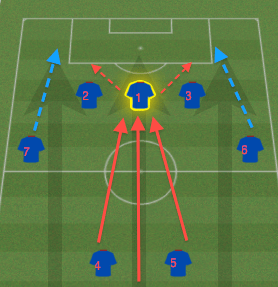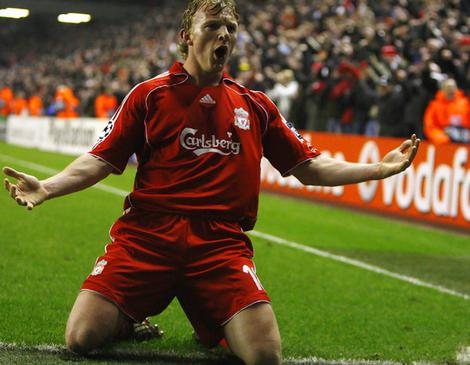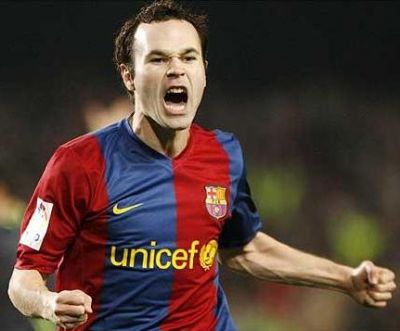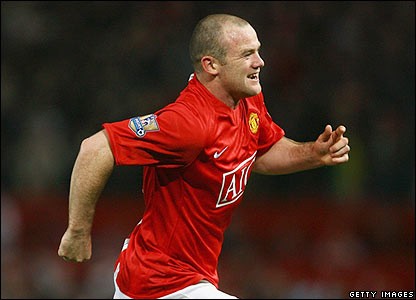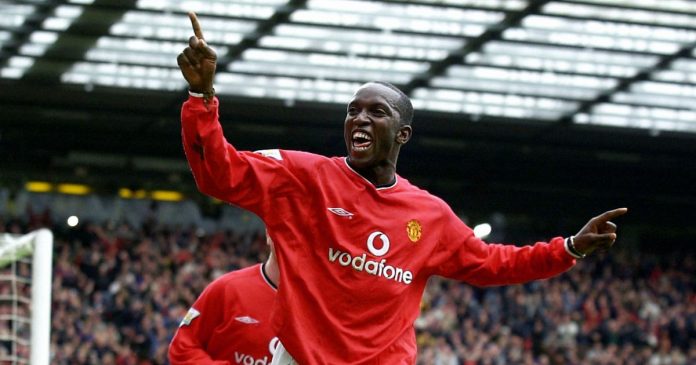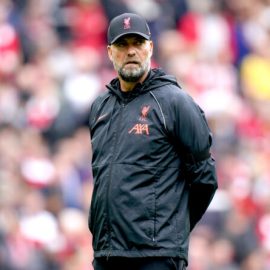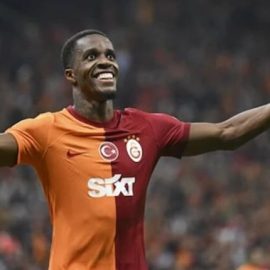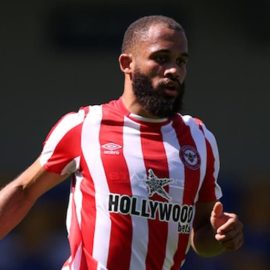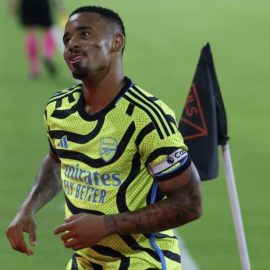Fun fact: Zigic isn’t the only target man. Obviously. There are others like medium-sized decently-skilled Carlton Cole, man-tank Emile Heskey, the ever deadly Miroslav Klose and lots more (Berbatov even does the job, inconsistently.) And they are even defined here as ‘an attacking player to whom high crosses and centres are played, [especially] a tall forward.’
Yes, that just about fits the bill of the average guy prescribed as a target man. Except I don’t think this is particularly true. In an age where tactics have indeed developed beyond ‘hoof it to tall guy in box’ the above description of a target man is far too specific. There are a number of different type of target man, in my humble opinion, attacking players who quite literally, a team will look to ping a lot of their passes to, or ‘target’ in order to gain advantage. He doesn’t have to be big and strong, or even be looking to smash defenders in challenging for game winning headers. He just has to be giving the team a platform to attack from consistently and reliably. Whether some of the following examples are true purveyors of this reliable tactical platform, I’ll let you judge for yourself.
The wide target man mark 1 (The Kuyt)
You hear a lot of people asking why Dirk Kuyt plays on the wing, or even why he plays at all. Definitely, he doesn’t resemble your average winger, and when he plays there, he isn’t full of bamboozling tricks, his crossing isn’t particularly good, and striker or not, he’s not really the type to cut inside and unleash a bullet into the top corner. So why did Rafael Benitez stick with him so consistently? Why did Bert van Marwijk? And why, more importantly, did they both utilize him on the wing?
The answer lies in the fact that wing backs, while having to be good defensively don’t have to be big and strong like a lot of central defenders are, and so usually they aren’t powerhouses like Vidic who can take care of target men trying to bully them. In other words, they will find it much harder then a pair of central defenders to compete with Kuyt aerially, win the ball back from him if it’s played into feet, or generally to stop him from bringing his entire team further forward into the opposition half through his hold up play.
Simply, a target man who can play on the wing is irritating for a fullback to play against. Because while Kuyt doesn’t have the greatest amount of skill his movement is generally very good, allowing him to receive the ball largely uncontested. While his crossing isn’t the best, it’s not bad either, and finally Kuyt generally makes good decisions.
Tactically he’s a dream for a manager, able to cause his opponents all kind of problems on the wing, in the area and even just outside the area with his movement, work rate and physical presence. Of course, it’s his strength that is largely the kicker. Kuyt can move into the back post on crosses and use his ability in the air to give his fullback a torrid time, transferring the bullying target man role away from where opponents find it easier to deal with.
He’s not so effective in past years, but when Liverpool had their overpowering midfield of Gerrard, Mascherano and vitally Alonso pulling the strings, with the opposite flank regularly occupied by the tricky Riera, Kuyt was at his very best, notching fifteen goals and ten assists in the 08-09 season and causing Hiddink concern as he mentioned in his press conference after defeating Liverpool in the Champions League quarter final at Anfield. “You have to analyse — and that’s not difficult with Liverpool — where their strengths are”Hiddink said. “You have to disarm Torres, Gerrard and the triangles with Dirk Kuyt…’
The reasons for his success and in fact Liverpool’s success that season come down to a team that was perfectly balanced and still had Alonso, who could find any player he wanted in a Liverpool shirt that season. But not only that, Liverpool had added to their ranks Albert Riera in the closing stages of the transfer window, someone who on the other flank along with the miraculously fit Aurelio and Emiliano Insua in his good season suited Kuyt perfectly. Where Kuyt could hold the ball up but not provide so much creativity, Riera could move up the field along with the rest of the team and feed off Kuyt’s holdup play, complementing Kuyt’s abilities with his own. As a player, Kuyt fitted into Liverpool of 08-09 perfectly.
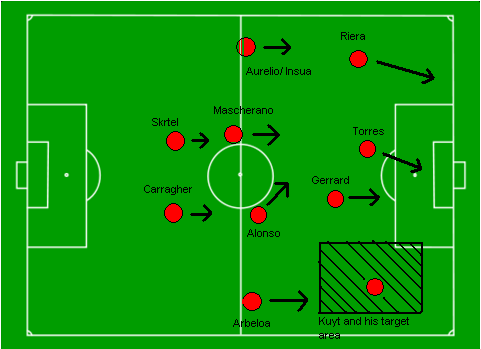
Of course, as Liverpool lost Alonso and waned next season, so did Kuyt. He is not an outstanding player, although he is a decent striker who can take goals on his day. What he is, is a toolbox for managers who want a different, hard to prevent way to get the ball forward. And in teams which have come oh so near oh so far (Liverpool in 08-09 and Holland in the recent World Cup) he has been a key component. So, the first variant is the wide target man mark 1 – the one who can overpower his wing back by sheer strength, so keeping the ball easier then a target man against two centre backs might. The sacrifice of flair on the wings for a bastion of a player to attack from. It can work. Especially with someone as hard working as Dirk Kuyt.
The wide target man mark 2 (The Iniesta)
There are a few reasons that direct wingers don’t always make the best target men, even under the more general term of platform for attack. Firstly, because generally wingers have to be quick – even if they aren’t fast on their feet, they need to beat their man quickly at times when the opposition are struggling to cover the gaps. It should be a winger’s instinct to beat the man in front of them and get a shot off or swing in a good cross. Not so much with the wide target man, the platform for others to attack. He shouldn’t be so much aiming to go all or nothing in attacking the box as he is supposed to be reserved, holding his position and the ball high up the pitch so his team can approach into more dangerous positions. Sorry Aaron Lennon, Jesus Navas, Scott Sinclair, you will never do this job.
Your target man mark 2 is for teams who play the ball on the ground. He may not be as physically imposing, and in fact doesn’t seem like your average target man – not quick, not stepping over the ball as if to touch it would set off a 2012 style apocalypse, but very good at keeping the ball. Calm and composed enough to hold the ball long enough for again, the opposition to move forward. Then, pass the ball off and what do you know? You are camped in the opposition half. Nice. And on the rare occasion, sometimes in big games, you see Barcelona pull this trick with none other then Iniesta. Sure, it’s not his best position – just type ‘iniesta on the wing’ into google (or better yet, follow that link) for a result titled ‘Please Pep, stop playing Iniesta on the wing.’ Obviously, he’s not Messi in that position – in fact it’s a surprising move for a team which sweep aside most opposition without trouble.
So let me elaborate on why Iniesta is useful there. Pep sees an opponent and thinks they might be a stern test, or might try and overtake them in midfield. Perhaps he thinks that he need someone to go direct to, someone to whom the ball can stick in the opposition half and allow the likes of Xavi and Messi to crowd around the box, allow Alves to combine with the Argentine and crush down upon the penalty area. If you play football on the ground and want someone to keep the ball in the opposition half while being patient, and waiting for the right moment to attack, Iniesta is your man. Technically able, has attacking threat, has a very, very high ball retention rate, and most importantly, patient. No better cornerstone from which Barca could lauch a beautiful assault on the bastion that is a penalty area defended by eleven men. And certainly, a different tactical option for when Barcelona want to spring a surprise, or find a surprise sprung on them.
And it’s not just Iniesta. Wenger too has deployed Bendtner on Arsenal’s flank for this purpose. More physically imposing then Iniesta and with not a little skill to go with it, Bendtner can perform the wide target man mark two role for Arsenal, and has done on a few occasions. It is rare to see this kind of move certainly. And some wingers such as Nani have the skill to hold the ball and attack the area, one of the facets that makes him such a difficult opponent. But in general, to use this type of player you are again sacrificing that directness, a little bit of creativity, some will argue sacrificing width, for that platform to attack. It is a question then, of weather that sacrifice is worth the benefit to your game plan. Certainly, target men of the wide kind can backfire, whereas the best central target men in the game carve their names across the footballing world – Ibrahimovic, Drogba, Klose.
The next however, is quickly becoming quite fashionable.
The false nine (The Rooney)
It could be argued that the false nine began with Luciano Spaletti. His 4-6-0 Roma side were a revolution, with Totti dropping well off the defenders to not only horribly outnumber the opposition in midfield, but also giving the opposition defenders terrible problems with having to cope with runners from the wings, midfield and of course Totti whenever Roma inevitably won the ball. It was however, an imperfect system, as a 7-1 combustion against Manchester United demonstrated. Until Ferguson copied the system and crafted his double winning team on it.
It is all based around this false striker, who dropping off from the defenders, receives the ball knowing that a defender has been pulled off the defensive line to close him down – leaving three defenders patrolling a very large portion of pitch into which wingers can run and exploit the space. The false nine is the most modern and evolved target man – a lone striker who in dropping off the defence, pulls it apart.
To be fair, defences don’t have much choice about the matter. Your typical midfield has at best three central players – a system which with the addition of the false nine not only leaves those three players with the possibility of being overwhelmed, but also leaves that false nine in the gap between midfield and defence – that very, very dangerous position from which you can shoot, play teammates through or simply force the defence to narrow, allowing a wide player all the space he could want to whip a cross into the box.
As a target man, the false nine is a joker in the pack, and a far cry from a big guy who feeds off crosses. The defence either play a high line, and possibly suffer the consequences of wingers moving inside to feed off through balls, or they sit deep and let the midfield be lost. Of course there are specialised tactics that could combat the false nine – but none the less, the false nine is very much in my opinion a target man – that is someone to get the ball to in order to put pressure on the defensive line. Rooney, in the days when he was at the top of his game, had masterful games in this role, as this article from the tactical analysis site zonalmarking attests, back in the days when he looked like being the star at the next World Cup. His mini slump from grace since then doesn’t change the potential of such a radical target man – a role which will become more and more common place in top-level football.
Target men aren’t just big lumps. They have feelings too you know…
But seriously. Gone are the days when key attacker occupied the centre of the pitch, and the same goes for target men. The evolving definition of a target man is because managers and centre backs learnt from experience how to combat target men (Yes, Arsenal, they should have.) so target men like Crouch would begin to pick on the fullbacks when it came to crosses instead. New target men are not just aerially powerful giants with the occasional piece of skill – they move to different parts of the attacking part of the pitch, and they change style, in order that the opposition don’t know what to expect, or worse just can’t deal with this new tactical maneuver that allows the opposition to gain territory, and find better ways to threaten and score goals.
The time of target men being primarily centre back bullying tanks is well over. Remember that, if you ever see Iniesta take up position on the wing.
Add Sportslens to your Google News Feed!
